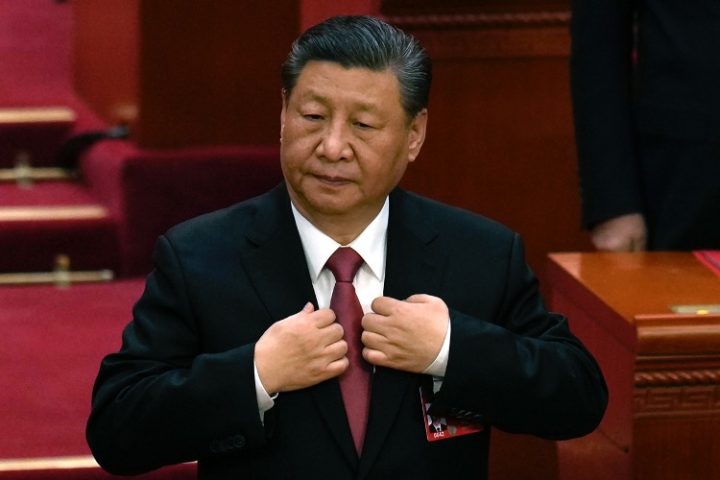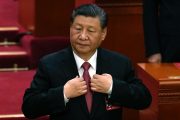
On April 19, Chinese President Xi Jinping announced a large-scale overhaul of the Chinese military and the creation of the Information Support Force (ISF), a new wing of the Chinese People’s Liberation Army (PLA), which will oversee hybrid warfare.
According to Russia Today (RT), Xi in his speech declared that China must channel efforts toward developing its military and boost military capabilities via “reform, science, and new talent.”
Moreover, Xi lauded the newly created wing of the army as a “strategic force” that will give invaluable support for the use of information system networks and coordination.
“It will play a crucial role in advancing the Chinese military’s high-quality development and competitiveness in modern warfare,” RT quoted Xi as saying.
Xi, who supervises China’s Central Military Commission (CMC), admitted that the creation of the ISF was a key move made by the CMC in wake of the “overall need of building a strong military,” the state-controlled Xinhua news outlet reported. Furthermore, the same Xinhua report stated that Xi instructed “the force to resolutely obey the Party’s command, and make sure it stays absolutely loyal, pure and reliable.”
The report added, “[Xi] urged efforts to build a network information system that fulfills the requirements of modern warfare and features the Chinese military’s own characteristics, as well as efforts to accelerate the development of integrated combat capabilities more effectively.”
Per RT, General Bi Yi was nominated commander of the ISF, while General Li Wei was appointed as political commissar. Explaining the role of commissars in the PLA, RT stated that they “serve as second-in-command and are largely responsible for administrative tasks and political education.”
Xi then elucidated that it was vital for the Chinese military to “adhere to information-led and joint victory, smooth information links, integrated information resources,” as well as bolstering information security, the same RT article went on.
Based on reports by The Economic Times, China’s ISF is deemed a new version of the PLA’s Strategic Support Force (SSF) set up in 2015 by the Chinese military to tackle space, cyber, political, and electronic warfare to participate in “informationized wars.”
According to another article by The Economic Times, the PLA SSF centralized space, cyber, electronic, and psychological warfare capabilities into a single service. Its role was praised as vital in attaining Xi’s aim to transform the PLA into a world-class army.
During a press briefing on April 19, Chinese Defense Spokesperson Senior Colonel Wu Qian disclosed more information about the PLA’s “establishing a new system of services and arms.”
At the moment, China’s PLA has a new system of services and arms under the leadership and command of the CMC, Wu revealed.
Wu pointed out four services, namely, the Army, Navy, Air Force, and Rocket Force. The four arms of the PLA are the Aerospace Force, the Cyberspace Force, the Information Support Force, and the Joint Logistics Support Force, Wu said, as cited by the state-run Global Times.
With the most recent military reforms, Wu proclaimed, “As circumstances and tasks evolve, we will continue to refine the modern military force structure with Chinese characteristics.”
Setting up the ISF is essential for the modernization of national defense and the armed forces in the modern era, Wu elaborated, as quoted by Global Times.
The ISF is a major application of the network information system, which harbors a huge responsibility in enhancing the PLA’s ability to fight and win in modern warfare, Wu added.
Commenting on the responsibilities of China’s Aerospace Force, Wu had this to say: “We are committed to peaceful utilization of space and stand ready to work with all countries with the same commitment to strengthen exchanges, deepen cooperation and contribute to lasting peace and common security in space.”
Per a study released on April 22 by the Stockholm International Peace Research Institute (SIPRI), military expenditure worldwide rose by 6.8 percent in 2023 year-over-year and achieved a new record high of $2,443 billion, with China, the United States, and Russia being the three largest global spenders.
The SIPRI study explained reasons for this increase in global military spending: “The rise in global military spending in 2023 can be attributed primarily to the ongoing war in Ukraine and escalating geopolitical tensions in Asia and Oceania and the Middle East.”
According to a press release by SIPRI, Nan Tian, Senior Researcher with SIPRI’s Military Expenditure and Arms Production Program, stated that “the unprecedented rise in military spending is a direct response to the global deterioration in peace and security.”
“States are prioritizing military strength but they risk an action-reaction spiral in the increasingly volatile geopolitical and security landscape,” Nan went on.
The same press release continued:
China, the world’s second largest military spender, allocated an estimated $296 billion to the military in 2023, an increase of 6.0 per cent from 2022. This was the 29th consecutive year-on-year rise in China’s military expenditure. China accounted for half of total military spending across the Asia and Oceania region.
Noting that China’s increasing military expenditure spurred its neighbors to raise their own military spending, SIPRI stated, “Japan allocated $50.2 billion to its military in 2023, which was 11 per cent more than in 2022. Taiwan’s military expenditure also grew by 11 per cent in 2023, reaching $16.6 billion.”
“China is directing much of its growing military budget to boost the combat readiness of the People’s Liberation Army,” remarked Xiao Liang, researcher with SIPRI’s Military Expenditure and Arms Production Program. “This has prompted the governments of Japan, Taiwan and others to significantly build up their military capabilities, a trend that will accelerate further in the coming years.”
The United States remained by far the world’s largest military spender with a 37-percent share of the world total and $916 billion spent in 2023, according to the aforementioned SIPRI study.



